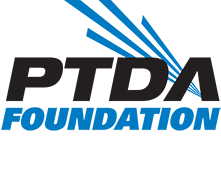The votes are in and the winners of the 2021 LEAP Awards (Leadership in Engineering Achievement Program) were announced in a digital ceremony with products across multiple categories, including Software.
Critical to LEAP’s success is the involvement of the engineering community. No one at WTWH Media selected the winners. Instead, our editorial team did the arduous work of assembling a top-notch independent judging panel, comprised of a cross-section of OEM design engineers and academics — 14 professionals in total. This judging team was solely responsible for the final results.
In the category of software, the winner of the Bronze award is GE Digital for is iFIX HMI/SCADA software.
iFIX is a flagship HMI/SCADA software product from GE Digital with a 35-year history. iFIX 6.5 improves productivity and process control with industrial-strength SCADA and High-Performance HMI. The new iFIX 6.5, part of the Proficy family from GE Digital, leverages the latest technology to help deliver faster time to insight and greater efficiency for operations while speeding time-to-value for system integrators.

iFIX 6.5 offers capabilities to decrease development and deployment time and increase engineering, system integrator, and operator productivity. These enhancements provide new Object Orientation in a unified and central Proficy Web- based configuration environment for Rapid Application Development, a modern Web-based database manager, High Performance HMI sample applications to jumpstart development, new High-Performance HMI Dynamos, performance, and security improvements.
iFIX suits process industries like water/ wastewater, life sciences, food & beverage, consumer goods and specialty chemical industries.
The Configuration Hub hosts the product configuration, enabling users to host multiple product configuration elements of the same product, for example: Two instances of iFIX nodes can be configured using the same instance of Configuration Hub.
iFIX 6.5 improves equipment uptime and product quality by improving operator reaction time with rapid problem identification, prevention of operator mistakes, and provides intelligent warning.
The winner of the Silver award is Synopsys, with its RTL Architect program.
In a traditional design flow, RTL developers architect circuit behavior with little visibility into how it is physically implemented. In many cases, module owners run a quick synthesis to check for syntax errors then hand off the blocks to an integrator who oversees consolidation and final synthesis. The integrator is primarily concerned that the block interface signals connect with the top-level, and that the timing and power constraints are consistent.

The RTL developer typically has little to no insight into how the logic will be physically implemented in layout. Their logic block might communicate to another block that is physically placed on the other side of the chip. In this scenario, implementation might require the addition of pipeline registers and feedthrough nets to the RTL to meet timing. However, it could take days from the RTL handoff to feedback from the implementation. In some cases, a new version of the RTL is ready before the previous version is synthesized and implemented. Besides timing, other useful implementation insights are power, congestion and area.
The core differentiating technology in RTL Architect is its fast, multi-dimensional Predictive Engine that enables RTL designers to predict power, performance, area, and congestion impact of their RTL changes. RTL designers can now pinpoint inefficiencies in their HDL source code and improve its quality. The new product also provides RTL restructuring, constraints management and cross-probing facilities to provide early insights into key quality metrics.
RTL Architect addresses RTL design-closure challenges. It is a physically aware RTL analysis, optimization and signoff system, built from the ground up for RTL handoff. RTL designers can quickly achieve superior RTL and reduce their SoC implementation cycle in half. RTL Architect was designed to provide timely results for multi-million instance block designs and sub-systems with tens of millions of instances.
RTL Architect provides a logical/physical workbench that can accurately predict the PPA impact of architectural changes without waiting for feedback from the physical design team.
The winner of the Gold award is Protolabs with its revamped Digital Quoting platform.
It is used by product designers and engineers to order prototypes and low-volume production parts from the digital manufacturing company. The software is what drives the speed and agility that customers expect from Protolabs. But it was in need of a major overhaul to update code that was decades old.

Thus, Protolabs unveiled the all-new ecommerce software platform first in Europe in October 2020 followed by the U.S. in February 2021 to further streamline the front-end of the digital manufacturing process.
A culmination of four years of work involving more than 400 employees across all departments, the digital quoting platform has a modern, user-friendly interface that lets engineers better manage their project requirements and collaborate with colleagues, reducing the time it takes to get parts quoted and ordered. For example, users can now easily share quotes with collaborators, who can in turn adjust lead time, materials, finishing, and other options to see real-time pricing impact.
Also, users can use interactive design for manufacturability analysis to improve part designs before any actual production begins. Engineers have access to a 3D view of their CAD model that highlights any manufacturing issues that need to be adjusted. Users can also see gate and ejector pin layout before ordering injection molding tooling, quickly assign threads for CNC machining, or see the per-part pricing with itemized costs of 3D-printed parts.
A goal was to clearly structure complex decision trees required for buying custom parts to simplify the process and make it accessible to users of all backgrounds.
The new platform brings new transparency to projects. For example, a new Price Curve Tool compares prototyping vs. on-demand manufacturing options so you have full visibility to total cost of ownership on molded parts throughout the product life cycle. Users also have access to a “Receive By” calendar for shipping simplicity, allowing them to choose the date they want parts shipped and see cost implications.
The new digital ecosystem also unites three of Protolabs’ services—molding, machining and 3D printing—in one platform, providing engineers a single source supplier for multiple manufacturing capabilities.
The transformation didn’t only include a new user-facing ecommerce experience, it involved revamping much of the manufacturing and engineering systems that connect the automation software to the manufacturing floor, which houses a network of hundreds of machines. This complete connectivity throughout the process, which is referred to as the digital thread, is what makes it possible to turn around parts in days.
To accomplish the goals of the enterprise-level endeavor, Protolabs had to redeploy and integrate its CRM, ERP and business intelligence systems.
The software was also moved to a web services architecture in a hybrid cloud infrastructure, which had several benefits. By incorporating cloud services, the platform can be easily upgraded as better capabilities come along since it did not have to be developed internally.
Filed Under: Awards • acquisitions, NEWS • PROFILES • EDITORIALS




